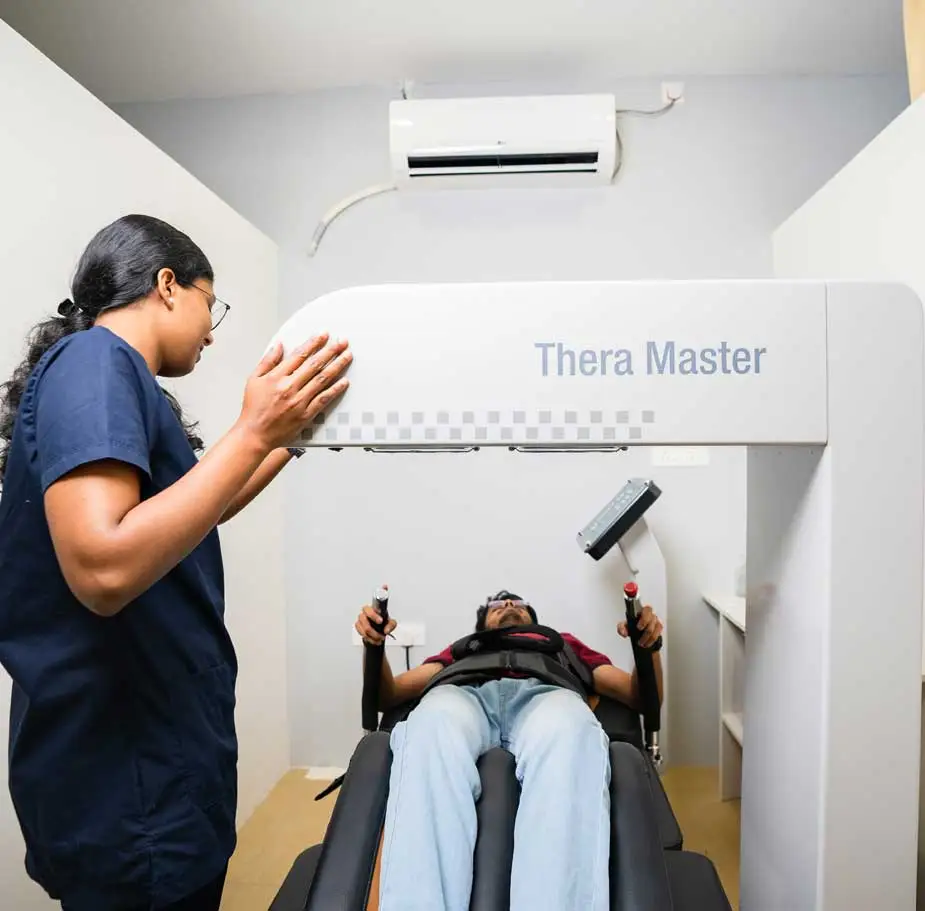Spondylosis
Symptoms
For most people, cervical spondylosis presents with minimal symptoms.
Tingling, numbness, and weakness of upper and lower extremities.
Lack of coordination and difficulty in walking
Loss of bladder or bowel control
Stiffness
Causes
The causes of cervical spondylosis may include:
Diagnosis
Treatments
Pain killers may relieve the pain temporarily, but it does not cure in all cases. Most of these problems may be managed without surgery with physical therapy. If it is an acute case (less than 6 months) icing is recommended to reduce the muscle ache. IFT, Ultrasound, and TENS are the electrotherapy modalities in physiotherapy management. Neural mobilization is very effective to relieve tingling and numbness to the lower limbs.
Our Spinal Wellness Program is a combination of manual and advanced therapeutic modalities, specific to individual patient conditions and diagnoses. Spinal decompression is an advanced version of traction which allows a negative pressure of -150 to -200 mm Hg to help the disc shrinks to its original shape. It applies computer-controlled pulling forces at measured angles to gently distract specified spinal segments. This distraction in the joints relieves pressure within the disc and any pinched nerves which promotes the movement and absorption of fluids and nutrients in the disc space. These fluids and nutrients are adequate to maintain disc health. Progressively these mechanisms can help to relieve pain.
Back ergonomic guidance and correction is critical for proper rehab and is extremely important for backache management as it helps in preventing recurrence. This consists of proper postural habits, a proper work environment, back exercises, and modifications in activities of daily living.

Elements of Spinal Wellness Program
Spinal Decompression Therapy
Pain Management
Exercises
Nutrition & Diet Management
Lifestyle Management
Ergonomics Guidance
Get a Quick Reply Here
Office
Monday to Saturday: 8:30am – 6pm
